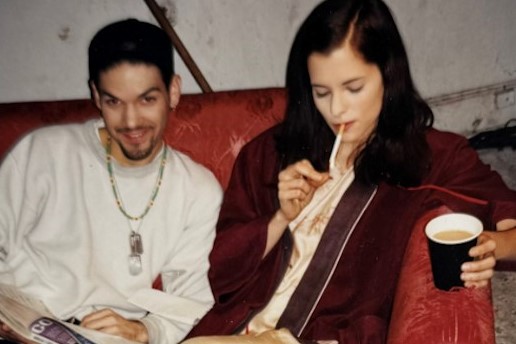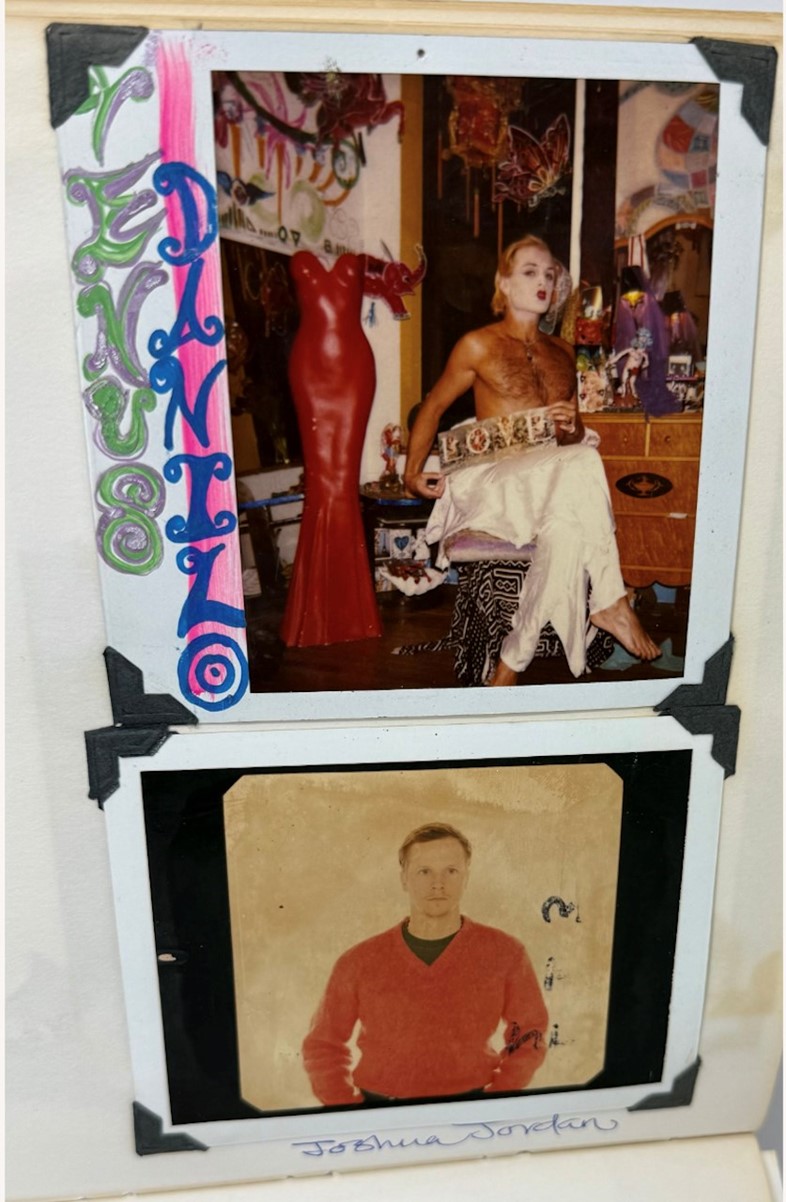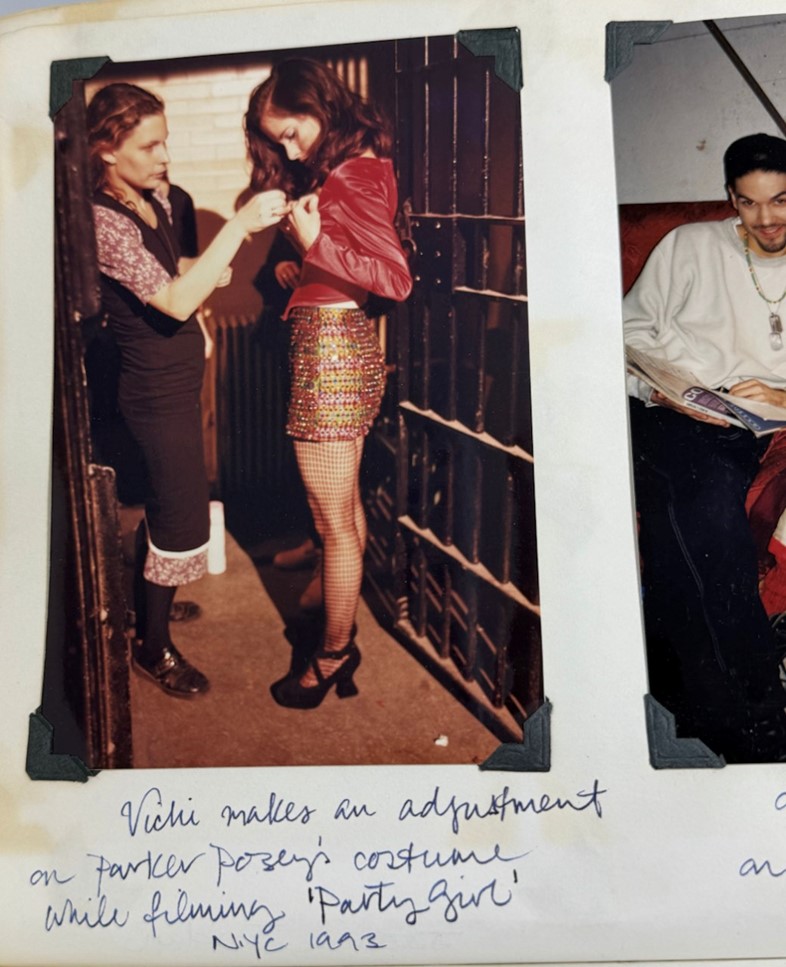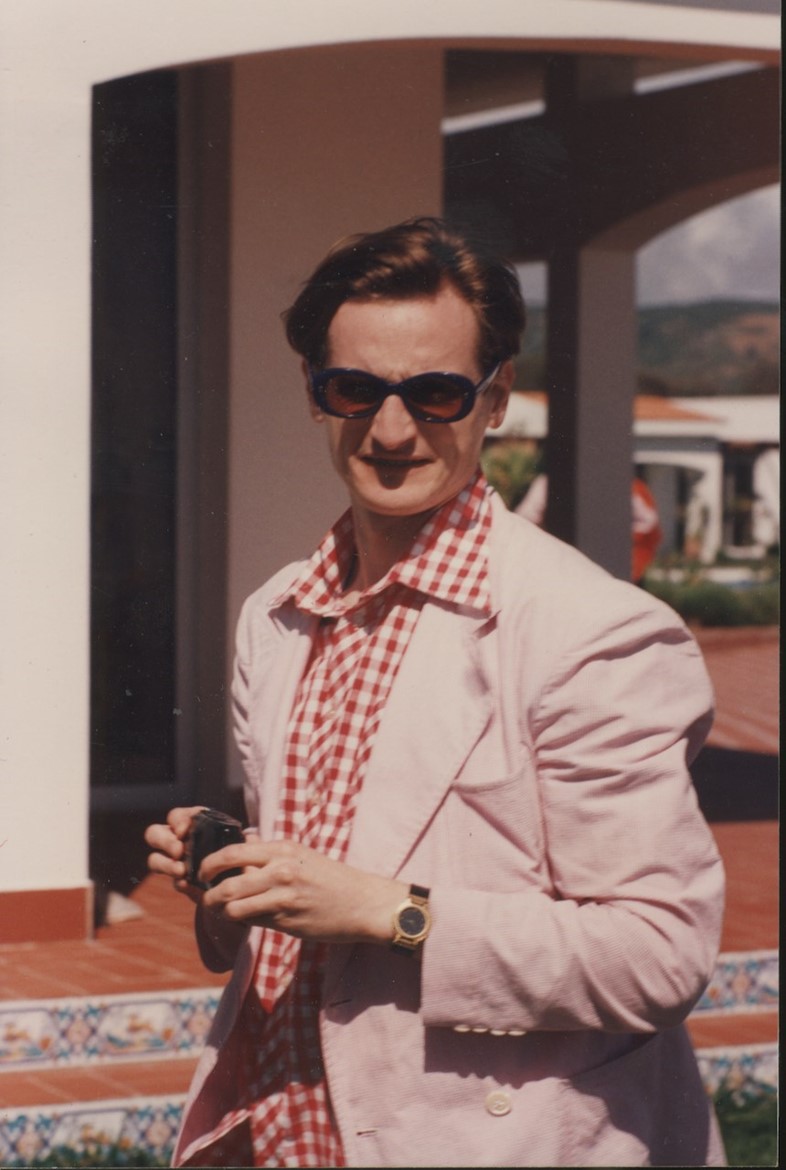
Rewrite
Party Girl Scrapbook21 Images
Right now, a new generation are being put on to Parker Posey in the latest season of White Lotus, but as mega as her turn as prescription drug-addled Southern belle Victoria Ratliff is, she’s long been an alt-girl icon – namely thanks to her role as Mary in 1995 flick Party Girl. Telling the story of a New York club kid who gets arrested at rave and is punished by being put into a job at the public library, Party Girl has gone down in history as one of the most stylish movies of all time.
Costumed by Michael Clancy, who mixed high-fashion from Jean Paul Gaultier, Vivenne Westwood, and Comme des Garçons in with pieces pulled from Posey’s own wardrobe, right now, Party Girl stills are being shared up and down the timeline as fashion fans tap into the movie as a source of inspiration. As kids turn their back on algorithmic dressing and return to cultivating their own personal style instead, who better to look to than someone who mixed satin opera gloves with combat boots and clashed leopard print with candy stripes and John Lennon sunglasses?

Now, a scrapbook belonging to Clancy has gone on sale, and its pages are stuffed with the research that went into the film, as well as a bunch of behind-the-scenes photos captured on set as Posey and the rest of the cast are being dressed or hanging around between scenes. Acquired by Daylon Orr of Fugitive Materials, there are also snaps of Clancy’s close friend, Vogue editor Hamish Bowles, as well as his extended NY friendship group. With Fugitive Materials dedicated to documenting “queer, underground, and oppositional histories”, Orr explains that “The scrapbook is an important record of creativity, joy, and life in the wake of the AIDS crisis that needs to be documented for the future.”
In fact, the whole reason Clancy started the scrapbook was because of the passing of his friend Keith. “When I went to sort through his things after his death, it got me thinking that should I die suddenly, what coherent record would be left of my life, its activities, pastimes, and companions?” he scrawled on the opening page. “I decided I wanted to keep track of it in a sort of documented way. With Keith’s death I sometimes reflect that except his memory in the minds of those who knew him and a handful of photos, there is nothing to show for his having ever been born or ever lived or his slow, premature and cruel death of AIDS”.
With Orr scanning the scrapbook’s pages and adding to his archives for future posterity, the physical copy is being sold at this month’s edition of the New York International Antiquarian Book Fair, meaning if you’re in NYC and a Party Girl superfan, you could potentially be taking home a very special artefact. Below, he talks us through the importance of the journal in both fashion and wider cultural history.

Hey Daylon! First of all, how did you happen upon the scrapbook?
Daylon Orr: We were contacted by a colleague who had discovered the scrapbook and, like us, wanted to make sure it was preserved.
A scrapbook is quite an intimate thing! Why is this one being sold?
Daylon Orr: Fugitive Materials works to document and preserve queer, underground, and oppositional histories. We believe it is vital that these histories are preserved for generations of students, activists, and creatives for decades to come – especially in this present moment. This scrapbook is an important record of creativity, joy, and life in the wake of the AIDS crisis, and it is important that it’s documented for the future.
Michael Clancy made clear that he wanted this journal preserved, as so many lives were lost without record during the AIDS pandemic affecting his community. It is a unique and critical record of early 90s New York queer fashion, arts, culture, activism, and nightlife.
As Clancy writes on an opening page of the journal: “I’ve kept a journal off and on for years and the inspiration for this picture journal was I think triggered by the death of my friend Keith. When David, Jodie, and I went to sort through his things after his death it got me thinking that should I die suddenly what record, coherent record, would be left of my life, its activities, pastimes and companions? So I decided I wanted to keep track of it in a sort of documented way. My journals and pictures and a few treasured items can perhaps one day in the future be sealed inside a sealed leded [sic] box and buried so that should some future person come upon it they will have a record of my life, some tangable [sic] proof of my existence.”

Can you tell us a little more about what’s in it?
Daylon Orr: This scrapbook records the lives of Michael Clancy, his friends, and colleagues in the film, fashion, and queer activist and nightlife scenes of the 1980s and 90s. These include behind the scenes shots from Party Girl and other productions that he worked on throughout that time period. There are several shots of Parker Posey and co-stars Guillermo Diaz and Liev Schreiber, as well as a behind the scenes photo of the director, Daisy Mayer, and other film crew members and actors on the various projects on which Clancy worked.
Party Girl is renowned for its costume design, and for its insider portrait of the queer New York film scene, both of which Michael Clancy was instrumental in shaping. Before entering costume design full-time, Clancy worked at the celebrated New York nightclub, AREA, and was deeply immersed in a queer fashion and party scene.
Working on a total film budget of $150,000, the film is renowned as a breakout hit in Posey’s career, and widely celebrated for the costume design. Clancy borrowed clothes for the film from friends, including Vogue editor and close friend Hamish Bowles, who is heavily pictured in the album. On the 25th anniversary of the film in 2020, Clancy told Vogue, “I’ve done a lot of films, and people sometimes say to me, ‘What have you done that I may have seen?’ It’s always a tough question to answer because you don’t want to just start reeling off your resumé. But if everything else fails, when I’ve listed a few and they haven’t seen them, I say Party Girl, and they say, ‘Oh my god, I love Party Girl!’ It still seems to hit a chord.”

Do you have a favourite photo inside the scrapbook?
Daylon Orr: It’s hard to pick one favourite! There is an iconic photo of Posey smoking a cigarette on set which is a perfect portrayal of the small and intimate the production was – and we are especially fond of this film for its documentation of librarianship and the alternative librarians we love.
Another series shows Hamish Bowles posing in his apartment, an intimate portrait of the inimitable fashion editor.
We also love the memorial page to Clancy’s friend and nightlife personality, Haoui Montaug, with a photo of Haoui, surrounded by hand-drawn artwork, and a news article about Montaug on the opposing page. Haoui Montaug (1952– June 7, 1991) was a doorman of the New York City nightclubs Hurrah, Mudd Club, Danceteria, Studio 54, and the Palladium, and ran the roving cabaret revue No Entiendes which showcased among others a young Madonna and early performances by the Beastie Boys.
It is a touching dedication to a friend and titan of queer New York nightlife, and perfectly encapsulates the importance of this album in the historical record and the goals with which Clancy undertook this project.
Is there a holy grail book you’d love to get your hands on, one that has slipped through your fingers, or a most treasured one you would never part with in your collection?
Daylon Orr: There are so many! We’re always looking, working with activists and artists. What we most love is finding new homes for these materials where they can be properly documented and preserved for future generations.
in HTML format, including tags, to make it appealing and easy to read for Japanese-speaking readers aged 20 to 40 interested in fashion. Organize the content with appropriate headings and subheadings (h1, h2, h3, h4, h5, h6), translating all text, including headings, into Japanese. Retain any existing
tags from
Party Girl Scrapbook21 Images
Right now, a new generation are being put on to Parker Posey in the latest season of White Lotus, but as mega as her turn as prescription drug-addled Southern belle Victoria Ratliff is, she’s long been an alt-girl icon – namely thanks to her role as Mary in 1995 flick Party Girl. Telling the story of a New York club kid who gets arrested at rave and is punished by being put into a job at the public library, Party Girl has gone down in history as one of the most stylish movies of all time.
Costumed by Michael Clancy, who mixed high-fashion from Jean Paul Gaultier, Vivenne Westwood, and Comme des Garçons in with pieces pulled from Posey’s own wardrobe, right now, Party Girl stills are being shared up and down the timeline as fashion fans tap into the movie as a source of inspiration. As kids turn their back on algorithmic dressing and return to cultivating their own personal style instead, who better to look to than someone who mixed satin opera gloves with combat boots and clashed leopard print with candy stripes and John Lennon sunglasses?

Now, a scrapbook belonging to Clancy has gone on sale, and its pages are stuffed with the research that went into the film, as well as a bunch of behind-the-scenes photos captured on set as Posey and the rest of the cast are being dressed or hanging around between scenes. Acquired by Daylon Orr of Fugitive Materials, there are also snaps of Clancy’s close friend, Vogue editor Hamish Bowles, as well as his extended NY friendship group. With Fugitive Materials dedicated to documenting “queer, underground, and oppositional histories”, Orr explains that “The scrapbook is an important record of creativity, joy, and life in the wake of the AIDS crisis that needs to be documented for the future.”
In fact, the whole reason Clancy started the scrapbook was because of the passing of his friend Keith. “When I went to sort through his things after his death, it got me thinking that should I die suddenly, what coherent record would be left of my life, its activities, pastimes, and companions?” he scrawled on the opening page. “I decided I wanted to keep track of it in a sort of documented way. With Keith’s death I sometimes reflect that except his memory in the minds of those who knew him and a handful of photos, there is nothing to show for his having ever been born or ever lived or his slow, premature and cruel death of AIDS”.
With Orr scanning the scrapbook’s pages and adding to his archives for future posterity, the physical copy is being sold at this month’s edition of the New York International Antiquarian Book Fair, meaning if you’re in NYC and a Party Girl superfan, you could potentially be taking home a very special artefact. Below, he talks us through the importance of the journal in both fashion and wider cultural history.

Hey Daylon! First of all, how did you happen upon the scrapbook?
Daylon Orr: We were contacted by a colleague who had discovered the scrapbook and, like us, wanted to make sure it was preserved.
A scrapbook is quite an intimate thing! Why is this one being sold?
Daylon Orr: Fugitive Materials works to document and preserve queer, underground, and oppositional histories. We believe it is vital that these histories are preserved for generations of students, activists, and creatives for decades to come – especially in this present moment. This scrapbook is an important record of creativity, joy, and life in the wake of the AIDS crisis, and it is important that it’s documented for the future.
Michael Clancy made clear that he wanted this journal preserved, as so many lives were lost without record during the AIDS pandemic affecting his community. It is a unique and critical record of early 90s New York queer fashion, arts, culture, activism, and nightlife.
As Clancy writes on an opening page of the journal: “I’ve kept a journal off and on for years and the inspiration for this picture journal was I think triggered by the death of my friend Keith. When David, Jodie, and I went to sort through his things after his death it got me thinking that should I die suddenly what record, coherent record, would be left of my life, its activities, pastimes and companions? So I decided I wanted to keep track of it in a sort of documented way. My journals and pictures and a few treasured items can perhaps one day in the future be sealed inside a sealed leded [sic] box and buried so that should some future person come upon it they will have a record of my life, some tangable [sic] proof of my existence.”

Can you tell us a little more about what’s in it?
Daylon Orr: This scrapbook records the lives of Michael Clancy, his friends, and colleagues in the film, fashion, and queer activist and nightlife scenes of the 1980s and 90s. These include behind the scenes shots from Party Girl and other productions that he worked on throughout that time period. There are several shots of Parker Posey and co-stars Guillermo Diaz and Liev Schreiber, as well as a behind the scenes photo of the director, Daisy Mayer, and other film crew members and actors on the various projects on which Clancy worked.
Party Girl is renowned for its costume design, and for its insider portrait of the queer New York film scene, both of which Michael Clancy was instrumental in shaping. Before entering costume design full-time, Clancy worked at the celebrated New York nightclub, AREA, and was deeply immersed in a queer fashion and party scene.
Working on a total film budget of $150,000, the film is renowned as a breakout hit in Posey’s career, and widely celebrated for the costume design. Clancy borrowed clothes for the film from friends, including Vogue editor and close friend Hamish Bowles, who is heavily pictured in the album. On the 25th anniversary of the film in 2020, Clancy told Vogue, “I’ve done a lot of films, and people sometimes say to me, ‘What have you done that I may have seen?’ It’s always a tough question to answer because you don’t want to just start reeling off your resumé. But if everything else fails, when I’ve listed a few and they haven’t seen them, I say Party Girl, and they say, ‘Oh my god, I love Party Girl!’ It still seems to hit a chord.”

Do you have a favourite photo inside the scrapbook?
Daylon Orr: It’s hard to pick one favourite! There is an iconic photo of Posey smoking a cigarette on set which is a perfect portrayal of the small and intimate the production was – and we are especially fond of this film for its documentation of librarianship and the alternative librarians we love.
Another series shows Hamish Bowles posing in his apartment, an intimate portrait of the inimitable fashion editor.
We also love the memorial page to Clancy’s friend and nightlife personality, Haoui Montaug, with a photo of Haoui, surrounded by hand-drawn artwork, and a news article about Montaug on the opposing page. Haoui Montaug (1952– June 7, 1991) was a doorman of the New York City nightclubs Hurrah, Mudd Club, Danceteria, Studio 54, and the Palladium, and ran the roving cabaret revue No Entiendes which showcased among others a young Madonna and early performances by the Beastie Boys.
It is a touching dedication to a friend and titan of queer New York nightlife, and perfectly encapsulates the importance of this album in the historical record and the goals with which Clancy undertook this project.
Is there a holy grail book you’d love to get your hands on, one that has slipped through your fingers, or a most treasured one you would never part with in your collection?
Daylon Orr: There are so many! We’re always looking, working with activists and artists. What we most love is finding new homes for these materials where they can be properly documented and preserved for future generations.
and integrate them seamlessly into the new content without adding new tags. Ensure the new content is fashion-related, written entirely in Japanese, and approximately 1500 words. Conclude with a “結論” section and a well-formatted “よくある質問” section. Avoid including an introduction or a note explaining the process.


